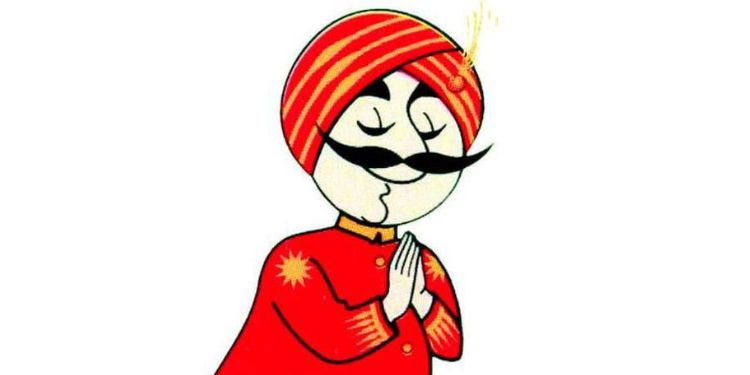Air India was in the news for all wrong reasons, again. This time, for inaction against unruly behaviour of the unspeakable kinds by passengers.
Apart from the social media outrage for delayed action, Air India was also slammed by the Directorate General of Civil Aviation (DGCA). The aviation watchdog said in a statement that Air India didn’t report the incident until DGCA sought the incident report on 5 January 2023. It further stated that the airline’s e-mailed response on January 6 showed that provisions for handling unruly passengers had not been followed on one said flight.
The recent controversy and attendant visibility only underlined that brand Air India does indeed carry negative baggage. Can it shake it off? We asked some brand watchers and experts:
Did the recent incidents of unruly passenger behaviour, the airline’s mishandling of it and attendant negative publicity underline Air India’s “negative” brand baggage? What does the airline have to do to course correct?

“Unlike yesteryears a customer grievance or complaint doesn’t get resolved with the brand owner apologising or making good the bad for the affected individual. Today the brand gets pulled out in the open by news-hungry and hyperactive social media predators and the brand is caught off guard, answerable to millions of non-customers with whom they have never had a relationship before. It is like public flogging for a mistake done behind doors. Everybody seems to be taking the responsibility to reprimand a brand for its slip-ups and goof-ups,” observed Pavan Padaki, Author Brand Vinci and Branding Coach.
In today’s world of woke and demanding consumers, to answer or resolve a customer grievance, speed of response is a given, according to Padaki.
He noted that a brand needs to prudently take care of two dynamics: the type of responsive action it plans to take and the communication of its action to the affected customer and equally to the public at large. He says, “The affected individual could perhaps get a satisfactory response or compensation but the question is, will the rest of the world be satisfied with the responsive action taken? In most cases, the lack of communication of its responsive action is not heard or PR-ed effectively making the brand vulnerable to public scrutiny and social media bashing.”
Brands caught off guard by a customer grievance having gone public can take it as an opportunity to respond aptly and creatively to demonstrate their sensitivity and establish brand values even better, contended Padaki.
“It’s time brands rewrite their SOPs when it comes to handling customer grievances and complaints,” he added.

According to Lloyd Mathias, Business Strategist and former marketing head of HP Asia, what Air India got wrong was the fact that the incident happened back in November, 2022 and it took a long time to report the issue and offender to the police and make it public.
He explained, “The long silence was something which was completely unacceptable. Air India has a long legacy of being a public sector airline. Now that the Tatas have taken over, they will have to reset a lot of policies on how to handle such incidents. They should communicate the same to the cabin crew and crew at the airport. There should be fair and consistent treatment which ensures that these incidents don’t happen in the future. What airlines have to do is to clearly apologise and communicate publicly, which they have already done. Second is to rework the process internally and third is trying to generate and build much better customer orientation. I believe Air India needs to rework on its customer centricity.”

“Air India initially tried to put a ‘diaper’ on the peeing incidence, covering it up and wishing it would not leak, rather than coming clean immediately,” said Shweta Purandare, Communications Expert.
She added, “For any issue having the potential to snowball into a crisis such as this one, speed of response matters the most. For a 26 November 2022 incident, the Tata Sons Chairman gave a public statement only on 8 January 2023. While their current procedures were being followed behind the scenes immediately post receiving the complaint in November itself, the @#it had hit the roof causing a tsunami of negative PR. Fortunately for Air India, this ‘peeing Tom’ was not a celebrity or a politician or else it could have taken a much uglier turn. However, they are on the right flight path now! Their response assuring that they would review and repair their every process, is the right approach. In fact, they could turn this crisis into an opportunity by bringing in the much-needed stricter alcohol policy. Inebriated and hence unruly passengers, is one of the main issues their crew and ground staff faces regularly. In my opinion, Air India and Tata Sons enjoys a very strong brand equity and this too shall pass.”

Lakshmipathy Bhat, SVP – Global Marketing & Communications, Robosoft Technologies underlined that mishandling of what has been called ‘peegate’ will cause damage to the brand’s equity in the short term.
“Memes, nasty word plays and jokes have been circulating on social media at the brand’s expense – not a situation any brand would like to be in. As N Chandrasekaran said the team’s response could have been swifter. More than how they handled the situation post reveal of the incident, some introspection of how the team handled the situation when it happened matters most. Maybe it is to do with training, better presence of mind and addressing the aggrieved passenger’s anguish on the spot – and making an example of the bad behaviour from a passenger. On course correction, I would say the primary focus should be on staff training and getting them prepared for such situations. And convey the steps taken to the general public. There’s already talk of ‘best practices’ on long haul flights such as avoiding alcohol, drinking lots of water to stay hydrated and such like. Maybe airline brands can collectively encourage more such discussions so that the consumer is educated. I would see these as priorities in the next three to six months,” he added.

Kaustuv Chunder, Partner, Fox Mandal & Associates LLP, believes that the unruly behavior of the passenger and the airline’s mishandling of the situation certainly had a huge impact on the international brand value of Air India.
“In my view, the staff as well as the cabin crew, though they can’t prevent this type of behavior always, should have been much more compassionate to the victim, and arranged for an alternative seat, possibly a fresh dressing, and should also have reported the incident to the authorities immediately on arrival, if not immediately upon occurrence. They had no business attempting for settlement between the perpetrator and the devastated victim. An incident like this needs ruthless handling of the perpetrator,” he added.

“I don’t think it’s a school student kind of scenario where the pupil misbehaves and the school has to get blamed. People from different strata of society travel in an airline and if someone does something unruly, it is not the fault of the airline. In fact they tried their best to salvage it and control it, unfortunately things went out of control as a cre of six to eight cannot control 100-plus passengers in an airline. But, people will move on and Air India will definitely come out strong in the coming days,” added Santosh Padhi, Chief Creative Officer, Weiden + Kennedy.

















